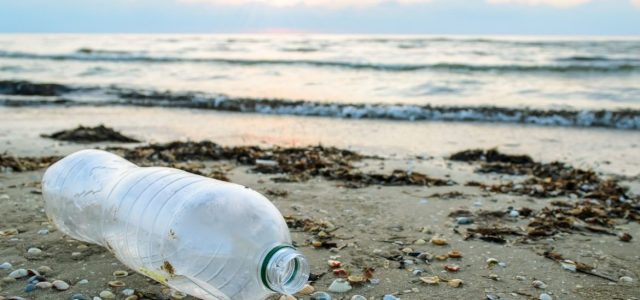“Planetary alarm” for an “ecological disaster” in Venice?
The environmental group Italia Nostra (Our Italy) dramatically declared impending catastrophe in Venice during a national press conference on 4 July.
Cristiano Gasparetto, a member of the board for Italia Nostra’s Venice chapter, announced that Venice risks becoming an “ecological disaster.” Alessandra Mottola Molino, Italia Nostra’s President, explained that “We need to launch a planetary alarm”, as reported in the UK’s Daily Telegraph here: Venice \'risks losing its soul due to mass tourism\'
A series of claims are listed to support this imminent disaster. Each of these claims is questioned in the forthcoming book Venice in Environmental Peril? Myth and Reality (UPA, late 2011) by Dominic Standish. Here are the series of claims and a preview of why they should be questioned:
* “The lagoon city risks ‘losing its soul’ as it struggles to cope with 60,000 tourists a day, nearly double the number it can sustain, according to Italia Nostra.” Why can’t Venice “sustain” approximately 30,000 tourists a day in 2011 if the city welcomed and coped with many more visitors over 200 years ago? “[I]n the year 1775 the number of those who arrived on the eve of the Ascension day, amounted to 42,480, exclusive of the preceding days,” wrote Johann Wilhelm Von Archenholtz in 1785 (Von Archenholtz 1785, 37; cited in Davis and Marvin 2004, 36). Now “[t]ourists account for approximately 30% of the daily city users,” according to an OECD (2010, 75) assessment of Venice. Although Venice does get very busy with tourists, improved infrastructure and technology mean that the city copes much better now than in the past.
* “Venice faces an ‘irreversible’ environmental catastrophe unless visitor numbers are capped and cruise ships are restricted.” Why should tourism be capped, which would limit the number of people who can enjoy the city? How would the number of visitors to the city be capped? An entrance fee would discriminate against less wealthy tourists. Moreover, what is the evidence of this irreversible catastrophe? The wake of cruise ships “erodes the delicate mud banks and wooden piles on which the city is built, Italia Nostra said.” Waves that damage Venice are primarily caused by tens of thousands of boat trips around Venice every day by water taxis, cargo boats, public water buses and private vessels. Cruise ships are a very small proportion of boat traffic through Venice and create minimal waves. Instead of blaming cruise ships, constructing a subway through the Venetian lagoon could drastically reduce boat trips and wave damage. But Cristiano Gasparetto of Italia Nostra identifies the subway as another cause of “ecological disaster.”
* Finally, Lidia Fersuoch, the President of Italia Nostra’s Venice chapter, claims that the mobile barrier dams being built to protect Venice from its highest floods will permanently block the Venetian lagoon from the sea. “In 100 years the sea level will be such that the barriers will have to remain closed all the time, blocking the natural exchange of sea water that is (the lagoon’s) very life source.” Between 1897 and 1983, the relative sea level (RSL) in Venice rose by 23cm, with 12cm of the 23cm RSL rise due to subsidence and 11cm caused by rising sea levels (Cecconi 1997, 1). The IPCC (2007, 2) establishes that global sea levels rose from 1961 by an average rate of 1.8mm/year (0.07 inches/year), and it has been estimated that rising global sea levels added 5cm (2 inches) to the water level in Venice between 1970 and 2005 (Istituzione Centro Previsioni e Segnalazioni Maree 2009). Yet the OECD (2010) notes that, “since the Mediterranean has registered stationary and even falling sea levels in recent decades, its take-up of global average sea level rise could be lower than in other places” (OECD 2010, 158).
There is so much uncertainty regarding climate change forecasts that it is impossible to predict dam closures accurately. Carbognin et al (2009, 7) emphasize the uncertainty of predictions and that climatic changes such as meteorological storms could substantially alter water dynamic perspectives for Venice. The scientific uncertainty about the consequences of climate change for Venice’s mobile dams does not prevent dramatic and definitive claims about what will happen in one century’s time. Shouldn’t we observe how the mobile dams function after they begin operation (predicted in 2014) before passing judgement on their effectiveness?
The impact of the dams “will change Venice as we know it” warns Fersuoch. Venice has always changed and we need to play an active role in changing it for the better. Policy decisions should be governed by our understanding of Venice’s past and present circumstances rather than fears about the future.
Comments
3 Responses to ““Planetary alarm” for an “ecological disaster” in Venice?”Trackbacks
Check out what others are saying...-
[…] A new terminal called ‘Isonzo 2′ was opened at the Maritime Station in Venice on 13 July. This terminal will provide more space for larger cruise ships to dock, as illustrated by the Venice Port Authority here: Inauguration of the new Cruise Terminal Isonzo 2 However, the inauguration of the new terminal was met with a press and Facebook campaign to ban cruise ships from passing through the basin of St Mark, which is in front of St Mark’s Square in Venice. The Facebook campaign Fuori le maxinavi dal bacino di San Marco also called for independent checks on emissions from cruise ships. Paolo Costa, President of Venice Port Authority, suggested making the passage through St Mark’s basin ‘one-way’ so that cruise ships either enter or leave through this basin, which would reduce cruise ship traffic there. The Facebook campaign Fuori le maxinavi dal bacino di San Marco has produced a photo montage of cruise ships in Venice to support their claims to restrict them. This can be viewed on You Tube using this link: Fuori le grandi navi dal bacino di S.Marco While some people may find the sight of towering cruise ships beside palaces shocking, others may consider this an interesting contrast of ancient and modern worlds. To what extent is this just a subjective question of preference? Or are calls to restrict cruise ships in Venice responding to significant problems of environmental damage? A recent press release by the Italian National Research Council claimed cruise ships are contributing to “micro tsunami” in Venice (see a summary of the study using this link: Quei 'micro tsunami' che affliggono Venezia). Despite the dramatic title of this press release using the evocative term “tsunami”, a recent study (‘The Future Ocean’) jointly produced by the Italian National Research Council and the University of Kiel revealed “these abnormal waves… represent, besides from environmental damage, a problem for the management and the navigability of the lagoon’s canals, and for the continual movement of contaminated sediments in the port’s industrial zone.” The study reveals that the speed of cruise ships causes “stress” for the lagoon’s bed and erosion. These findings might be true, but should Venice’s booming cruise ship tourist industry be curtailed for such limited environmental impacts? Moreover, the tens of thousands of boat trips by vessels other than cruise ships around Venice every day have much more impact in terms of pollution, lagoon erosion and wave damage to buildings and monuments. These boat trips could be significantly reduced by constructing a subway in Venice, which is opposed by leading conservationist groups, as we previously explained here: “PLANETARY ALARM” FOR AN “ECOLOGICAL DISASTER” IN VENICE? […]




Interesting notion: Does a place have a ‘soul’? Perhaps a more relevant question, related to your final sentence Dominic, might be around the spirit of Venetians and their capacity (historical/cultural) for change or adapting to changing circumstances?
John Berendt (‘City of Falling Angels’) comments, sometimes quoting the observations of Venetians themselves, on the intricate relations of Venetians with their swarms of invading tourists. A topical issue for many cultures both historically and today: the pros and cons of invasion!
What proportion of people today, in our consumer culture (including consuming culture like Venice!) cares whether their grandchildren sink or swim in the future. Venetians appear to be doing swimmingly these days, although one might be tempted to ask: ‘At what price?’ As a skilfully trading city exploiting its geographical vantage point, there has traditionally been a good flow of money through the lagoon. What is very clear is that these days many of us live in highly complex inter-national social systems, one element of which is considerable mobility.
I, for one, still loving visiting Venice (sometimes with my grandsons), to quietly imbibe it rather than consume it! Ah, the tricky contradictions involved in the human spirit!
Francis Standish
UNESCO places Venice “under surveillance” following the planetary alarm launched by Italia Nostra on 4 July http://nuovavenezia.gelocal.it/cronaca/2011/07/19/news/l-unesco-mette-venezia-sotto-sorveglianza-4641613